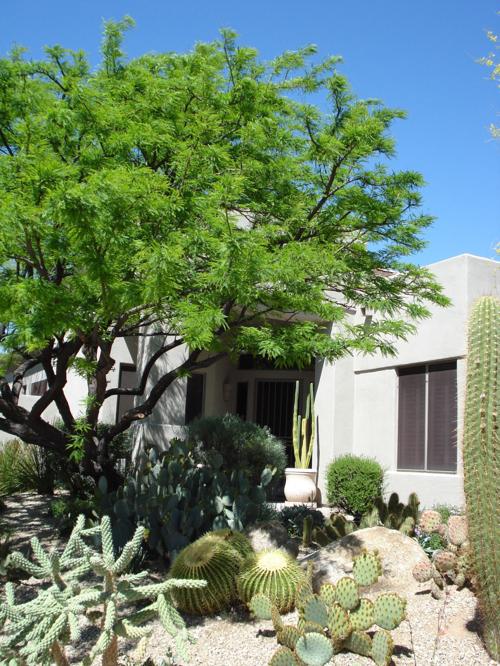Each year, thousands of Arizona residents email or call Rosie Romero’s radio show with questions about everything from preventing fires in their chimneys to getting rid of tree roots invading their sewer system. His goal is to provide answers that suit the specific lifestyle wherever someone lives in Arizona.
Q: I have a Chilean mesquite that’s about 6½ years old. The branches are getting so low that they touch the ground. Is it OK to prune off those lower branches? Somebody told me that you should not prune them very much.
A: It’s all right to prune them in order to correct the shape a little bit, and you can take off those lower branches. You probably also want to open up the canopy a little so that the monsoon winds don’t do a lot of damage.
Q: We have efflorescence on our side of a block wall fence that we share with an uphill neighbor. Neither their side nor our side of the wall was sealed by the builder. Our wall is getting very flaky and is crumbling on the bottom third of the wall. How do we address this issue to prevent future damage as well as make the wall look better by painting it? The wall is about 6 years old. It is not an option for our neighbors to dig down to seal their side. Is there any solution to this issue?
A: Efflorescence — a crystalline deposit on surfaces of masonry, stucco or concrete — is usually caused by water intrusion into the masonry block. Even if there is no irrigation taking place on your neighbor’s side of the wall, normal rainfall getting into the soil will find its way through the block, leaching calcium out of the block and degrading the wall. Normally any water-proofing material is applied to the uphill surface to prevent exposure. But if you can’t do that, you’re left with few options. There are water-proofing materials – like Drylock – that you can apply to your side of the wall. All the loose material will have to be removed first so that the block is thoroughly clean. Then the Drylock is painted on the problem areas. It bonds into the block and has a pretty high adhesion rate. It will withstand quite a bit of hydrostatic pressure from fluids. Once the water-proofing material cures, you can paint over it. You can find it at larger hardware stores in their paint departments.
Q: We have a 30-year-old shower with tile that was set in mud. A crack from the floor drain has now damaged two 4-inch tiles. What do I use to seal the crack under the tile in the old mud before installing two new tiles?
A: To seal the crack in your mud-set (cement mortar) shower pan, you may have to remove more than those two tiles. That’s because you want to make sure that you seal the full length of the crack that could extend past those two tiles. Once you expose the entire crack, make sure it’s clean and dry; then brush what’s called RedGard over the full length of the crack, and about two or three inches on each side of the crack. This material or similar materials are sold in the tile department at hardware stores. It comes in small plastic tubs, ready to apply with an inexpensive paint brush. It’s a rubberized compound that will seal the crack when dry. Then you reinstall the tile and grout. You may want to remove a couple more tiles around the drain and seal the transition between the drain and the mud-set pan just to make sure everything is sealed up tight.





